 He was an outspoken advocate for radically transforming infrastructure to create responsive sustainable cities, and played an instrumental role in transforming MIT's physical campus.
He was an outspoken advocate for radically transforming infrastructure to create responsive sustainable cities, and played an instrumental role in transforming MIT's physical campus.- MIT
Wednesday, June 23. 2010Arctic Opening (Fenętre Arctique)
By fabric | ch -----
Arctic Opening is a new installation by fabric | ch, curated by Seconde Nature (curatorship: Pierre-Emmanuel Reviron) that we will install next week on the Frioul Islands in Marseille (South of France, Mediterranean Sea), in the context of the Festival MIMI (Festival des musiques innovantes et actuelles). The installation will be freely accessible to everyone from the 30th of June to the 14th of July and is part of an outdoor exhibition presenting several works of art / experimental architecture (among which Nicolas Reeves, Lee Patterson).
The aim of the project is to let appear a "second day" made of a large artificial ligthing, between Marseille's sunsets and sunrises, when everything becomes dark and quiet on the islands. This illumination will have its source up north, beyond the polar circle, where the sun shines 24 hours long during summer. Thus the continuous day of the arctic summer will be transported to the shore of the Mediterranean Sea. Arctic Opening will light up a zone of the arid landscape of the Frioul close to an industrial ruin, channeling a fictional catastrophic future of an Arctic Ocean free of ice with the present of this mediterranean island, already surrounded by sea routes and heavy tourism. The result will become a metis landscape, all nights long: an arctic mediterranean, remote day at night.
The overall installation will look a bit like a scientific expedition, with sensing devices and climatic interfaces set up under a tent, which will analyze the polar meteorologic data and control the variations of intensity of Arctic Opening.
-------------------------------- ARCTIC OPENING
-------------------------------- Original Text (in French):
FENÊTRE ARCTIQUE Chaque jour, lorsque la nuit tombe sur nos paysages urbanisés, dans nos villes, nos rues ou nos ports, un autre jour se lève, électrique. C'est littéralement une " seconde journée " qui commence : celle des néons et des enseignes, des éclairages publics au sodium, au mercure ou à la fluorescence, celle encore des fenêtres et des vitrines illuminées, celle enfin d'une effervescence nocturne que nous ne connaissions pas il y a encore deux siècles. Bien qu'aujourd'hui nous n'y pensions plus guère, tant ce " deuxième jour " fait dorénavant partie de notre quotidien de citadins, cet éclairage fut une conquête : par le feu en premier lieu, par le gaz ensuite, et plus récemment par l'électricité. Cette lumière " fabriquée " permit d'abord de prolonger de façon artificielle le jour durant la nuit, d'éclairer la pénombre, mais aussi d'architecturer et de transformer de façon radicale notre relation au temps, au paysage, à l'espace. Elle permit surtout de dépasser cette donnée naturelle, immémoriale et incontournable qu'a toujours été le cycle du jour et de la nuit induit par la rotation de la Terre sur elle-même, et de redéfinir ainsi l'espace architectural et urbain. Cependant, ce jour devenu " perpétuel " grâce à l'électricité interféra dès le XIXème siècle avec nos rythmes naturels, produisant des modifications spectaculaires : émancipés de l'alternance diurne et nocturne imposée par la nature, les habitudes sociales et les usages des habitants bénéficiant de cette " découverte " se retrouvèrent immédiatement et irrémédiablement transformés. On se mit à vivre et travailler la nuit, à se divertir de plus en plus sous un éclairage artificiel, et parfois, en compensation, à dormir le jour… à l'abri des persiennes (autre système, mécanique celui-ci, de contrôle du climat et de la lumière). On se mit aussi à concevoir de nouvelles architectures qui ne nécessitaient plus d'éclairage naturel. En quelques décennies, l'éclairage artificiel modifia en profondeur les modes de vie des citadins, mais pas uniquement : les oiseaux se mirent à chanter la nuit à proximité des lampadaires, les insectes à s'agglutiner sous les projecteurs et les étoiles à s'effacer partiellement du ciel nocturne urbain, ouvrant ainsi la porte à un univers étrange, transformé et où se mêlent cycles naturels et artificiels. Pertes et gains donc. Ce nouvel environnement fut également marqué par la volonté des hommes d'en maîtriser l'" aléatoire " ou le " sauvage " pour prendre le contrôle d'un nombre grandissant de facteurs et de dimensions constitutives de leur habitat. Aujourd'hui encore, cette " deuxième journée ", historiquement " industrielle ", demeure souvent un jour à la lumière monotone, à vocation essentiellement fonctionnelle (voir, sécuriser, travailler, mais aussi lire, cuisiner, etc.). La plupart du temps, elle n'évoque rien, et si elle varie, c'est pour rester dans une zone de confort préprogrammée, au contraire des climats lumineux naturels qui jouent continuellement avec le paysage pour offrir différentes occupations et perceptions d'un même environnement. De plus nous commençons à peine à prendre la mesure du coût énergétique de cette entreprise et de sa participation au bilan écologique global négatif de l'humanité. Pourtant, cet environnement, parfois magique, parfois inquiétant, développe pour nous, incontestablement, une poésie des décalages. Ces décalages qui mêlent présents et futurs, il s'agit de les déployer dans une réflexion d'ensemble sur notre espace contemporain et notre consommation d'énergie. Conçu pour le Festival des Musiques Innovantes (MIMI) 2010 à Marseille, sur les îles du Frioul, le projet Fenêtre Arctique n'a donc pas pour objectif de nier cette " deuxième journée ", mais d'en amplifier les aspects sensibles et positifs. Fenêtre Arctique cherche ainsi à développer le potentiel d'imaginaire(s)de l'illumination artificielle, tout en intégrant les nouvelles technologies et les cycles d'éclairage intelligents à faible consommation énergétiques. Dans un environnement désormais mondialisé, perpétuellement interconnecté, où se développent de nouvelles mobilités, temporalités et comportements sociaux aux croisements des fuseaux horaires, ce jour artificiel offre l'occasion d'une ouverture vers d'autres jours, simultanés et distants : une " connexion " imaginaire ou médiatisée avec des contrées où précisément et littéralement, au même instant, il fait jour. Par le biais d'images satellites et de capteurs de données, il est désormais possible d'imaginer ouvrir une " fenêtre " sur une lumière sensible et éloignée dont l'intensité varie, continuellement, où le ciel est ensoleillé, puis couvert, puis éventuellement ensoleillé à nouveau. Une fenêtre " téléportant " de façon abstraite une atmosphère distante, sans mobilité physique, sans moyen de transport autre que le transport des données, de là-bas à ici. Avec Fenêtre Arctique, fabric | ch se propose de créer une telle " ouverture " à large échelle, vers un autre jour, durable et distant : une clarté artificielle, sensible, révélant certains motifs géographiques, lumineux et météorologiques, à l'échelle du globe (à l'été d'un hémisphère correspond en opposé l'hiver de l'autre, au clair l'obscur, au jour perpétuel d'un pôle la nuit de l'autre, etc.). Lorsque la nuit tombe sur Marseille, ce " deuxième jour " se lève en prenant sa source quelque part au nord du Cercle Arctique, aux confins des zones habitables (Hammerfest, Murmansk, Prudhoe Bay, Tuktoyaktuk, Igloolik, Clyde River, Scoresbysund, etc.), où une fois les glaces fondues de nouvelles routes maritimes s'ouvrent et s'ouvriront plus encore à l'avenir. Alimentée par la lumière de contrées, où, en cette saison, le soleil à l'éclairage horizontal ne se couche jamais, où son lever se mêle à son coucher, Fenêtre Arctique reproduit les modulations continuelles de l'été septentrional. Composée de centaines de diodes électroluminescentes (LEDs), cette bande lumineuse longue de dix-huit mètres éclaire un paysage rocailleux, balayé par les vents. Au lever du soleil, elle s'éteint lentement pour laisser apparaître une installation temporaire de tubulures, plantées là pour mener cette expérience en lumière distante. Dressée à proximité, au voisinage d'un vestige militaire et industriel du XXème siècle, une tente abritant des instruments de contrôle évoque une possible expédition scientifique en milieu " hostile ".
La combinaison de l'éclairage produit par cette fenêtre et le paysage des îles du Frioul engendre un territoire composite : Méditerranée arctique, jour distant nocturne. Ce territoire métisse en lumière mélangée est créé à dessein comme environnement prospectif des motifs contemporains de la mobilité et du croisement des fuseaux horaires, des flux et des réseaux, de l'artificialité et de la médiatisation, ou encore pour signaler les étranges similarités topographiques entre les îles arides du Frioul et les territoires arctiques où aucun arbre ne pousse. Comme si ce lieu temporaire au large de Marseille, éclairé par une lumière reconstruite et transportée de l'arctique, pouvait révéler le futur lointain, catastrophique et fictif, de ces territoires nordiques : réchauffés par les dérèglements climatiques, parcourus par le va et vient des bateaux lancés sur les nouvelles routes maritimes ouvertes par la fonte des glaces, les rives du Grand-Nord pourraient commencer à ressembler celles de la Méditerranée. Cet environnement se métisserait alors, lui-aussi, à la façon des populations devenues de plus en plus mobiles au fil du temps : mélanges d'ici et d'ailleurs, de futurs et de présents, de matériel et d'immatériel. Fenêtre Arctique : territoires mélangés.
fabric | ch, juin 2010.
-------------------------------- Project, conception and programmation: fabric | ch Ligths: Lumens8 On site supervision: Etienne Fortin, AMI MIMI Direction: Ferdinand Richard, AMI Curatorship: Pierre-Emmanuel Reviron, Seconde Nature
With the support of Marseille-Provence 2013, MIMI Festival and Lumens8. Arctic Opening is a MIMI 2010 creation by fabric | ch.
Related Links:Personal comment: Note: the MIMI Festival is the occasion to listen to some of the most innovative or profiled musicians in the incredible context of the Frioul Islands. I can for example highly recommend the evening of the 11th of July: Carsten Nicolai a.k.a. Alva Noto in concert with Blixa Bargeld (Einstürzende Neubauten). This promises a lot!
Posted by Patrick Keller
in fabric | ch, Architecture, Art, Territory
at
21:32
Defined tags for this entry: architecture, art, design (interactions), exhibitions, exhibitions-fbrc, fabric | ch, interface, interferences, landscape, lighting, phasing, territory, variable, weather
Tuesday, June 22. 2010Artificial beach (Slurry #3)Via Pruned ----- by Alexander Trevi
Thursday, June 17. 2010The "City-in-a-Box" and just-in-time private urbanismWhile writing a brief post for the CCA today about 19th-century "portable buildings" and their unexpected role in facilitating the European colonial project, I stumbled on the "portable camps" of Canadian shelter firm Weatherhaven.
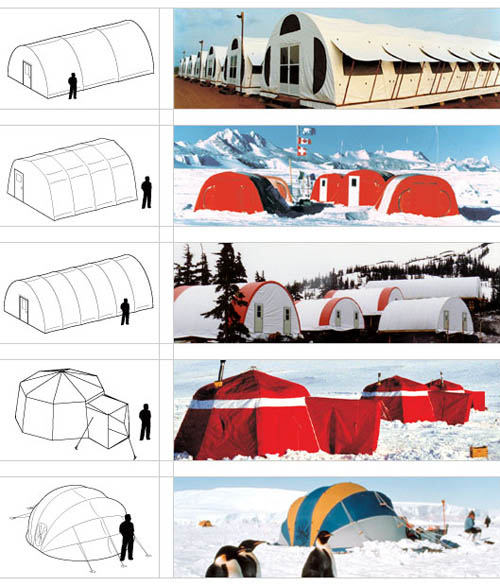 [Images: Multiple projects by Weatherhaven]. [Images: Multiple projects by Weatherhaven].Weatherhaven was founded, historian Robert Kronenburg explains in his book Portable Architecture, "in 1981 by the merging of two separate businesses, an expedition organizing team and a Vancouver-based construction company."
It is Flatpak City: pop open the box and go. 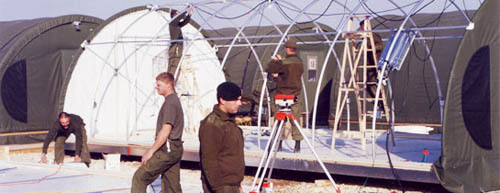 [Image: Service-installation by Weatherhaven]. [Image: Service-installation by Weatherhaven]."The first stage of the operation," Kronenburg writes, referring to a specific example of their cities-on-demand, "was to establish a Weatherhaven crew shelter so that a construction team could prepare a temporary landing site for heavier aircraft." From that initial seed, a whole civilization-by-airfield could be grown—an instant city from the sky. "A single crate was flown in by light aircraft and the building was assembled and in use within four hours."
It is just-in-time urbanism: parachuting in whole cities and logistical systems till a new, geographically remote metropolis is up and running in less than three weeks.  [Image: A military village by Weatherhaven]. [Image: A military village by Weatherhaven].These temporary mining villages and other extraction towns—somewhere above the Arctic Circle or deep in the desert, "often so remote as to be invisible to most of the world"—unfold in an industrial nanosecond. They stick around for mere years and then disappear, leaving no real archaeological traces, producing no tourist postcards, finding no place on any map, perhaps never even achieving the status of a formal name, yet nonetheless managing to house thousands of workers at a time. What role should such compounds play in the writing of urban and architectural history? 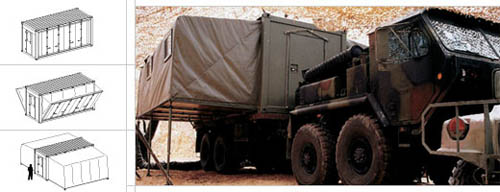 [Image: A military village by Weatherhaven]. [Image: A military village by Weatherhaven].At the very least, these "longer-stay remote shelters," as Kronenburg calls them, are surely as vital to the global economy—with deep connections to the extraction industries, from diamond mines to tar sands—as the banking district of a recognized urban conglomerate. How ironic it would be to discover someday that an instant village for 2,000 residents, air-delivered by Weatherhaven into the emotionally bleak but mineralogically rich Australian Outback, has a larger economic footprint than the entire business district of a city like Sydney. In many ways, I'm reminded of an article published last week in which we read that "Cisco Systems is helping build a prototype in South Korea for what one developer describes as an instant 'city in a box'."
Cities will be things you have delivered to you, like pizza, and they and their residents will be treated just as disposably. 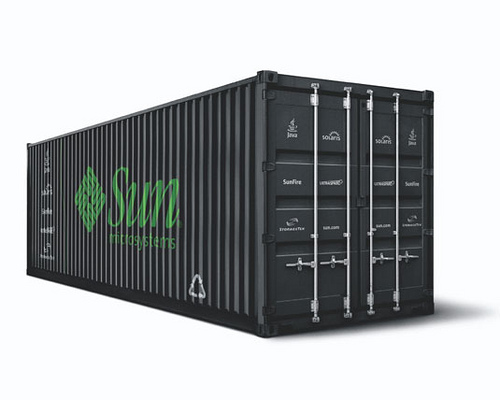 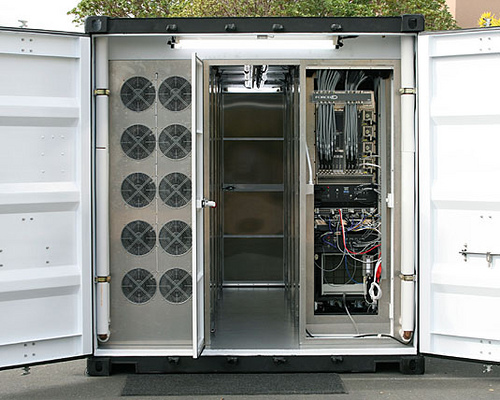 [Image: The "modular datacenter" of Sun's Project Blackbox, a stackable, shipping container-based, portable supercomputing and data storage unit]. [Image: The "modular datacenter" of Sun's Project Blackbox, a stackable, shipping container-based, portable supercomputing and data storage unit].Offloading a few of Sun's Project Blackbox units, seen above, in order to construct a privately chartered city-in-a-box, based around a remote airfield somewhere in the Canadian Arctic, is something as likely to be seen in a Roger Moore-era James Bond film as it is in the corporate spreadsheets of a firm like Rio Tinto; but I'm left dwelling on the question of where these sorts of settlements belong in architectural history. Purpose-built instant cities "purchased" wholesale from private suppliers, and erected in as little as one month's time, are only going to increase in quantity, population, diversity of purpose, and global economic importance in the decades to come; their impact on political science and concepts of sovereign territory and constitutional law is something we can barely even begin to anticipate. But if architects have more to learn from the international warehousing strategies of Bechtel than they do from the Farnsworth House or the software packages of Patrik Schumacher, then what role might firms like Weatherhaven prove to have played in transforming how we understand the built environment? Put another way, should the COO of Weatherhaven be invited to contribute to Icon's next "Manifesto" issue? If so, what might architects and urban planners learn?
Paysages en Exil / Nicolas Dorval-Bory + Raphaël BétillonVia ArchDaily
-----
by Karen Cilento
The national cultural event, Imaginez Maintenant, features work of young multidisciplinary designers (all under the age of 30) in nine French cities. Finding inspiration in Gilles Clément’s description of “wandering plants phenomenon,” Nicolas Dorval-Bory and Raphaël Bétillon’s selected project creates an experimental journey, inviting visitors to explore an unlikely landscape. Open from July 1st through the 4th, the project consists of an artificial cloud, a long greenhouse and thousand of seedlings which will rest on the banks of the Garonne, next to the Hospital of La Grave.
The journey through this new landscape begins at the greenhouse, a 50m long space which includes a sampling of seedlings from the 5 continents ” as a reference to the wandering plants and to the curing function of the hospital.” In this bright tunnel, visitors choose one of the 2000 plants to take with them on their journey. With seeds in hand, visitors penetrate a thick cloud formed from a dense mist from the spraying of the Garonne river through 1000 nozzles (installed by French company Dutrie, one the offices who carried out DS + R’s Blur Building). The cloud provides an eerie, distorting surrounding that will change colors in the night as it blankets the river.
Night View Rose Cloud The 100 m long cloud experience allows the visitor to become a part of an abstract, disconcerting humid environment and upon reaching the end, a luscious garden beckons the visitior to plant his selected seedling.
The installation deals with ideas such as invisible landscapes and climatic distortion, combining them into a sensory experience that will surely captivate visitors.   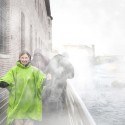  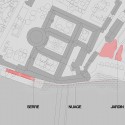 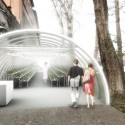 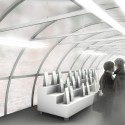 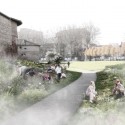 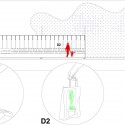 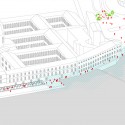 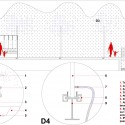 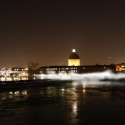 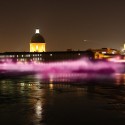 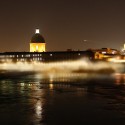
Project name: AYSAGES EN EXIL City, Country: Toulouse, France Team: Nicolas Dorval-Bory, Raphaël Bétillon, Paula Gonzalez Balcarce Status of project: Selected project, under construction, opening 1st of july 2010
Personal comment:
"Paysages en Exils", nice title for an interesting project. It reminds me so much of a project we did last year (unpublished on our website yet, unfortunately --but will soon be...--) that was named "Les Jours Migrants (Boréals/Australs)". The same sort of idea. Unrealised as usual... Or the project we are currently working on for the Frioul Islands in Marseille, "Fenętre Arctique" (Arctic Opening) --even if this last one is only based on lighting, due to budget restrictions... (but should be realised therefore!)--.
Posted by Patrick Keller
in Architecture, Design, Territory
at
10:50
Defined tags for this entry: architecture, climate, design, design (environments), installations, interferences, landscape, nature, territory
Tuesday, June 15. 2010William J. MitchellVia Archinect ----- Bill Mitchell, former dean of MIT's School of Architecture and Planning, dies at age 65  He was an outspoken advocate for radically transforming infrastructure to create responsive sustainable cities, and played an instrumental role in transforming MIT's physical campus. He was an outspoken advocate for radically transforming infrastructure to create responsive sustainable cities, and played an instrumental role in transforming MIT's physical campus.- MIT Personal comment: That's a real sad news... His books, in particular City of Bits (published in 1996) had a great influence on our work and approach when we started fabric | ch, back in 1997.
(Page 1 of 2, totaling 9 entries)
» next page
|
fabric | rblgThis blog is the survey website of fabric | ch - studio for architecture, interaction and research. We curate and reblog articles, researches, writings, exhibitions and projects that we notice and find interesting during our everyday practice and readings. Most articles concern the intertwined fields of architecture, territory, art, interaction design, thinking and science. From time to time, we also publish documentation about our own work and research, immersed among these related resources and inspirations. This website is used by fabric | ch as archive, references and resources. It is shared with all those interested in the same topics as we are, in the hope that they will also find valuable references and content in it.
QuicksearchCategoriesCalendarSyndicate This BlogBlog Administration |